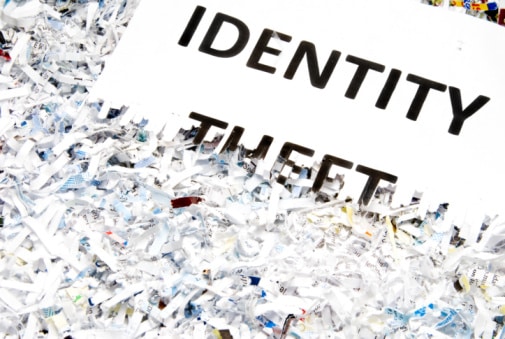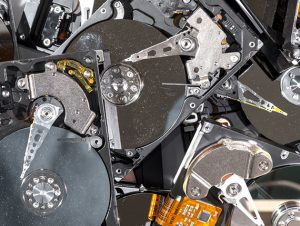March 30, 2018
Why Not Performing An Annual Shredding Event To Purge Old Files Could Be Putting Your Business At Risk!
Should I Shred Documents Annually?

Identity Theft
Shredding old files may seem like a minor task compared to other daily business responsibilities.
In reality, file purging is one of the most important steps to preserving your company’s livelihood and reputation.
Loose paper and old files make it easy for thieves to get their hands on personal information from clients and staff.
Many industries, like the medical field, have requirements to clear out old files after a certain amount of time.
State laws regulate the timeframe for removing old files, but HIPAA Privacy and Security Rules require entities to take measures to protect client health information, including proper disposal.
Whether your company has regulations or not, it’s a good business practice for all to adopt.
The best way to protect privileged information and your business is to destroy old documents during an annual shredding event.
Your business faces many risks by not making this activity a regular part of your risk management and privacy policy.
Identity Theft and Data Breaches
The top concern with holding on to old data is risking having it stolen. Identity theft cases damage companies of all sizes and types.
Storing old files makes it easy for criminals to gather information they can use in multiple ways for economic gain.
Holding files for ransom, taking over company systems and social media, and stealing tax documents are some of the most detrimental consequences for companies, customers, and employees.
Internal Data Leaks
You may be thinking of protecting employees, but you may need protection from them.
Most of them have access to data to do their jobs and could leak this information to the wrong person, intentionally or by accident.
Too much staff access to old information cost Wells Fargo millions of dollars after employees opened ghost bank accounts, credit cards, and unauthorized identity theft protection plans.
Privacy policy training, clean desk and shred-all policies and purging old files helps reduce the risk of internal fraud.
Compliance Issues
Government, financial, medical and legal industries have standards to meet with how they store and destroy confidential records.
If you fall within these categories, you’re subject to penalties for not complying to GSA, GLA, FACTA or HIPAA regulations.
Each of these industry types may also have requirements as to how the business transports and shreds the documents. The size of the shred may even be a factor.
Performing an annual checkup gives you a chance to make sure you’re not at risk for serious state or federal intervention.
Legal Trouble
If your business experiences a data breach, you will be held liable for damages to customers and employees.
Companies like Target and Equifax have had to settle class-action suits and make other investments to remedy damages due to data breaches and identity theft.
That’s not the only legal matter you could have to worry about. When attorneys request evidence by way of discovery, the law requires you to hand it over.
Old documents that should have been destroyed could become a part of that legal process.
Competitor Compromises
Competitors are always watching each other, and some will use any tactic they can to get to the top.
Old files and hard drives could have trade secrets, financial information, sales records and more.
One negligence could cripple your company and empower others in your industry by putting company information in their hands.
Brand Damage
Whether it’s an upset client, nosey competitor, or disloyal employee, the consequences will hurt your brand.
It’s a proven fact that a data breach will shatter customer confidence in your company, leaving a negative outlook towards your brand.
Competitors will also use your hard work to build their own brand and ruin yours.
By implementing the right paper shredding strategy, you can avoid it all. Take a look at how to set up your annual shredding event.
How to Perform an Annual Shredding Event
Some companies make their onsite shredding a company-wide event.
Start by working with management to schedule a date that’s convenient for the organization to maintain productivity.
Here are some other steps to make your paper shredding event a success:
- Gather information about what documents each department needs and how they use them.
- Go through files and boxes to remove outdated information. Add expiration dates to files you keep.
- Use this as a time to securely destroy old computers, mobile devices, and hard drives.
- Make sure it’s an onsite shredding event for extra security.
Choosing the Right Shred Company
Even if you don’t have a requirement to outsource your hard drive and paper shredding, using a company has undeniable benefits.
The biggest benefit is getting the job 6done without interrupting productivity or regular staff duties.
When using a shred company, be sure to choose a professional team with the right skills and credentials such as NAID, AAA and ISO 9001 Certifications.
Electronic Destruction
Many businesses store much of their sensitive information in digital form. That’s why you need a company who can dispose of electronic data using the right methods.
Since devices store information beyond you deleting it, it’s not enough to toss these items in a dumpster or recycling bin.
Make sure the professionals you work with can destroy computers, hard drives, CDs, and other electronic devices.
ISO 9001 and NAID AAA Certified
These qualifications let you know customer satisfaction is important.
ISO gives guidelines for meeting customer requirements and improving product and service quality.
The NAID conducts random audits on its members who provide information destruction services.
Audits ensure service providers follow protocol throughout the collection, transporting, and handling of confidential documents.
They also make sure organizations minimize risk of data compromise for entities under HIPAA who have to meet compliance standards by law.
Chain of Custody and Certificate of Destruction
Some businesses need proof of when and how they destroyed confidential information.
Even if you don’t need proof for compliance, it’s good to keep records of your information destruction activity.
If legal trouble happens or you’re involved in a data breach, you will have a certified document showing you did what you could to prevent it.
A Chain of Custody is a detailed description of all activities involving your shred documents. It documents dates, times, locations, activities, and staff who handled the data from pickup until destruction.
How the Chain of Custody Works
- Businesses collect documents in a locked bin the shredding service provides.
- Technicians transport the bin their mobile onsite shredding truck.
- Each box has a barcode attached for easy tracking.
- Technicians securely shred the documents.
- Trucks deliver the shredded remnants to the secure recycling facility where materials are bailed and sent to paper mills for pulping.
- Shred company issues a certificate of destruction
The certificate of Destruction serves as proof your shred job is complete and the company followed all guidelines for your industry.
It includes details of the job from start to finish and a witness signature.
Schedule your Annual Shredding Purge with Proshred® of Houston
We’re a local team of NAID AAA and ISO 9001 certified professionals with a national brand.
When you work with our extensively trained shred technicians at your annual shred event, your documents never have to leave the business location.
Our hands never touch the files and you can monitor the entire shred process.
When we’re done, we leave you with a Chain of Custody and Certificate of Destruction.
Contact us for a free estimate or to schedule Houston document shredding that fits your business needs.

